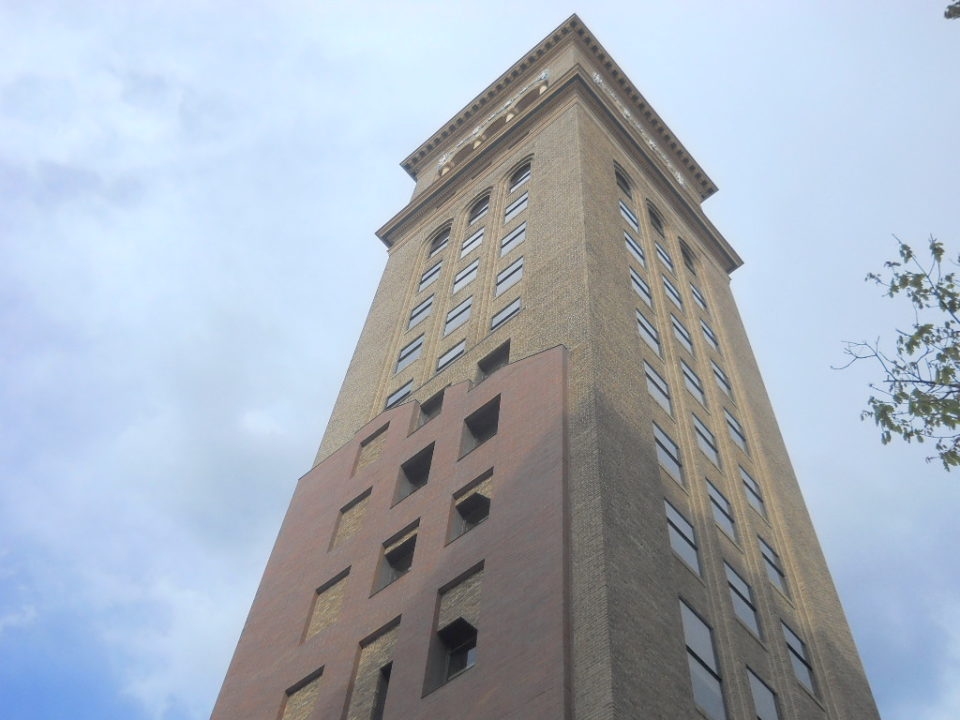Tourists walking around the lower downtown district of Denver might be surprised – and confused – when they come upon the Daniels & Fisher Tower at 16th and Arapahoe streets. Something about the structure makes it appear that it was once a much larger building, and sure enough, it was.
The tower was originally part of the Daniel & Fisher department store building, built in 1911 and designed in Italian Renaissance Revival style by Frederick Sterner and George Williamson. Its design was loosely based upon that of the Campanile of St. Mark’s Basilica in Venice. The 330-foot, 21-story tower featured a 20th-story observation deck as well as a large clock on all four sides designed by Seth Thomas Clock Company, which also designed street clocks in many American cities. It made the building one of the tallest in America at the time of completion, even though the remainder of the building stood at just five stories tall.
In its heyday, Daniels & Fisher was among the most frequented department stores in downtown Denver, competing primarily with Denver Dry Goods and Joslins. Its building was considered among the most distinctive in the city, largely because of its gigantic tower.
Daniels & Fisher operated within the building for just under five decades before being purchased by May Department Stores, prompting them to relocate in 1958.
The building sat vacant thereafter, and it soon became the center of a plan by the Denver Urban Renewal Authority for a major redevelopment of its lower downtown district. The Skyline Urban Renewal Project, as it became known, brought about numerous demolitions in the area.


Thanks to the advocacy of local preservation groups, the tower was added to the National Register of Historic Places in 1969. As a result, DURA opted to demolish everything except the tower; plain brick can be seen along the sides of the tower where demolition occurred. By 1973, the new Skyline Park had opened where the department store once stood.
The tower was largely neglected until it was purchased at the end of the decade by local developer David French, who then redeveloped the tower into office condominiums. The building reopened in 1981, but due to the limited budget of French’s project, many necessary renovations were put on hold.
In the mid-‘90s, a group of existing condo tenants came together to form the Daniels and Fisher Tower Preservation Foundation and successfully pursued government grants and other sources of funding to begin another round of renovations. Work began in 1995 and was completed in phases, with Tryba Architects helming the project. Most of the building’s remaining historic elements were restored and exhibits were added on the ground floor to show off the tower’s history. One such exhibit features the urn of William C. Daniels, who requested that his remains be left in his building’s tower.
The surrounding blocks have since been repopulated with new development, reviving the once-struggling LoDo district. An entertainment venue, Clockwork Cabaret, opened in the tower’s basement in 2006.
Today, the tower still houses office condos and stands as a relic to the earlier days of Denver’s LoDo district, amidst a sea of new development.


